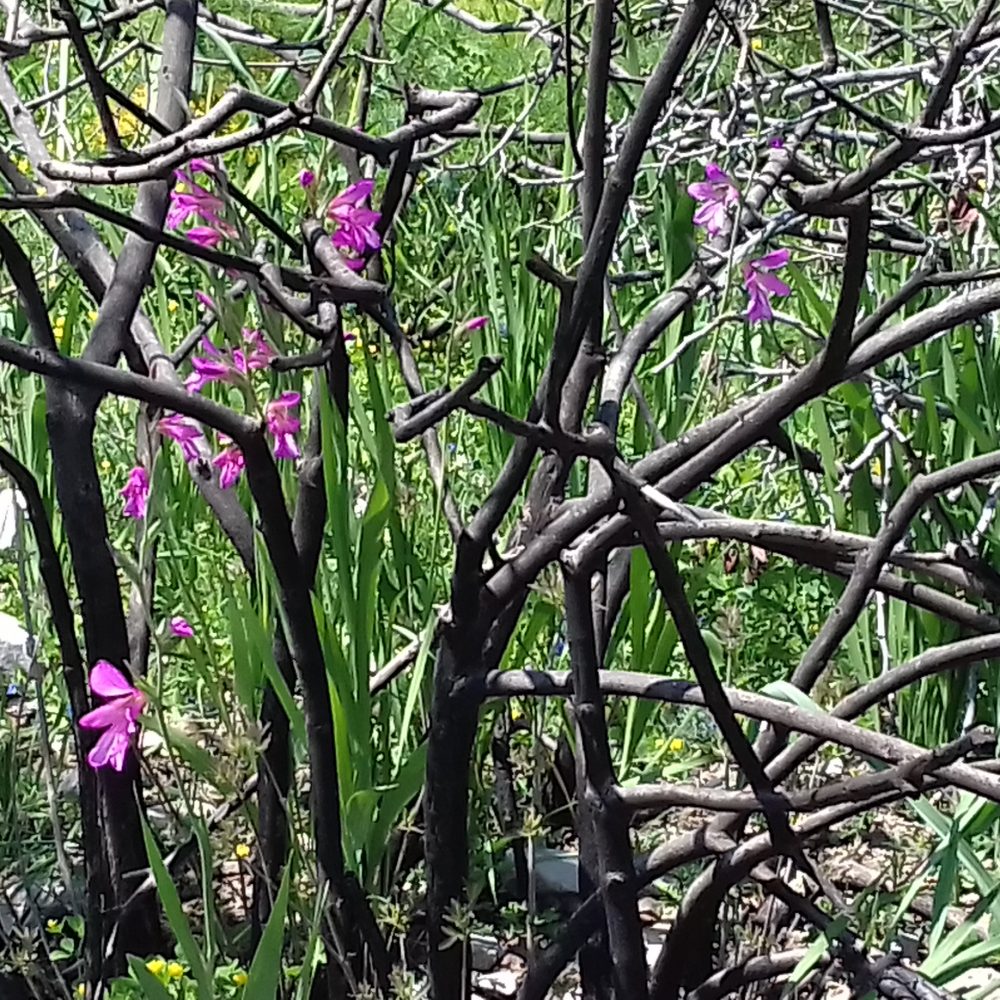
Thrive without end
April 8th 2017
The moon passed twice since the last pictures. Thriving micro biotopes, hot spots for the fertilization of the wider area emerged.
We cannot claim this professional videos. Nevertheless it is an unfaked outcome of professional work to foster resilience for selfsustaining landscapes. We show the efforts needed to revitalize desertifying soils and present the outcome in real time and over time.
Water is the bloodvessel of life. This is the only open and undisturbed pond in the wider area, which is accessible for wild life. The forthcoming hot and dry months will make it a species meeting point.
A 24/7 streaming video could capture valuable education material for small and big. The project is called: Rhythm and Truth
The present episode asks: Where is the living helicopter?
Drop by and your heart will open wide. It is real.
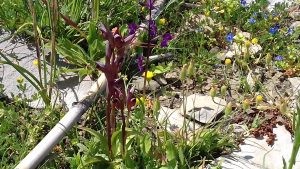
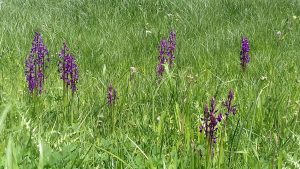
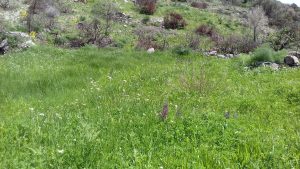
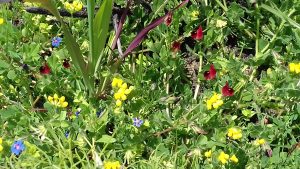
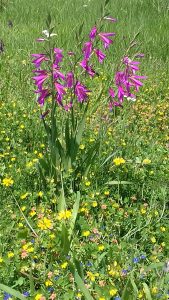
… and the show goes on
February 7th 2017
It is stunning. It is unique. Winter rainfalls make it visible. Water Harvesting in action. Biodiversity grows in quantity.
A water selfsufficient.resilient biotop emerges again from ashes. Its state of resilience does not need wo(man) to tackle the environmental damages man created. It will create, as long as w0(man) do not interfere, as long as its planetary future will be. Making opportunities for healing possible. The funny thing: It is applicable in vast territories of the planet. It is a matter of scale.
The site is located on the flank of a North South oriented valley. Our first landscaping measure was the integration of the physical water flow. Due to the land formation and plant cover we detected rain fall run offs. We shaped the site according to this parameters. We built a cleansing pond in such a run off formation and directed the water to a horizontal deeper area to slow down the flow.
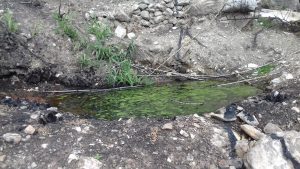
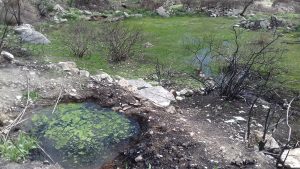
This flat plot halts the power of the running water which maeanders towards an unsealed ground water enrichment pond. The pics show the rich Algae population due to the “over fertilization” of the run off with ashes from the fire in August. In the further purifying process they will settle and are sequestred in fungae, root and plant.
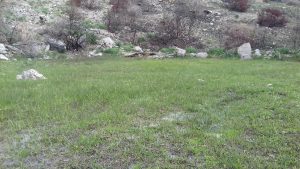
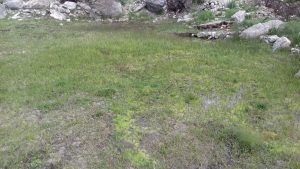
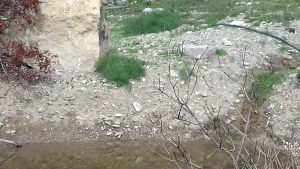
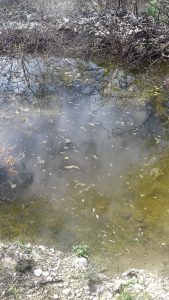
The water travels in openair chaneles downwards into an unsealed pond to enrich the ground water level. It continous to another maeandering aerea where it finishes in a clay sealed storing pond. The overflow nutures the third constructed wetland with hundreeds of palm sprouts germinating
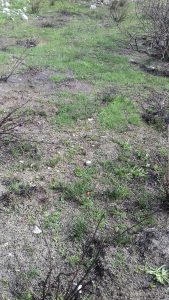
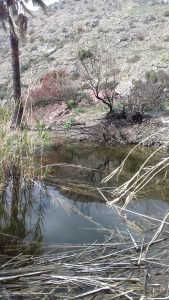
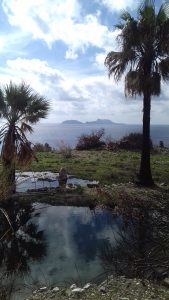
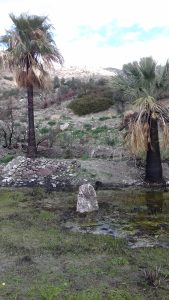
The run off of the site is crystal clear water, ashes and sedimentations have been removed and run off peak supply level delayed. It is a point of stabilization for the natural threshold in a downwards oriented spiral of decay. Left alone the site will absorb CO2 till its carrying capacity is reached
December 11th 2016
The site is in a small valley on the foot of the Buffala Mountain. It has smooth declination and large terraces. When organic agriculture begun in 1987 it was for its largest part a Ceratonia siliquia ( Carob tree)– Olea europea ( Olive tree } habitat. This ecosystem was the prevailing cultural landscape in Crete. Its land use brought up the mythology of the European civilization.
Following several forest fire the site and its surroundings degraded into a Pistacia lentiscus (Wild pistace) – Prunus amydaliformis ( Wild pear ) phrygana which is classified as habitat as well. It is a ecosystem with much lower diversity.
Wildfires have a devastating impact on ecosystems. They interrupt the food chain of the ecosystem.. In the beginning of our land use we intervened preventive in the geologic land formation with land shaping measures to make the surface a large water harvesting area for more stable water supply.
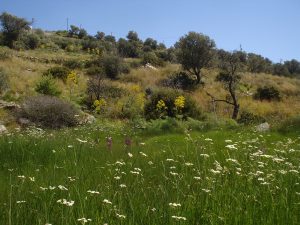
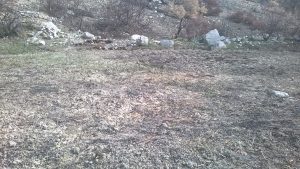
This has to be considered in the reporting of the recovery of the site. The area around is prone to heavy erosion and further degradation of soils. The pictures show the same views before and after wild fires.
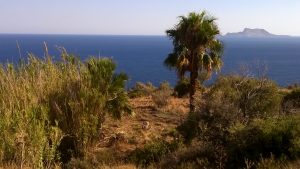
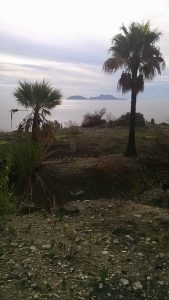
A typicall plant of Mediterranean forest fire follow up landscapes. Narcissus serontinus
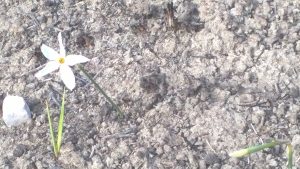
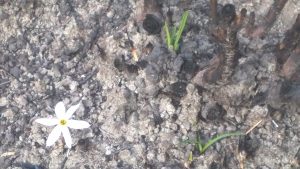
Leave a Reply